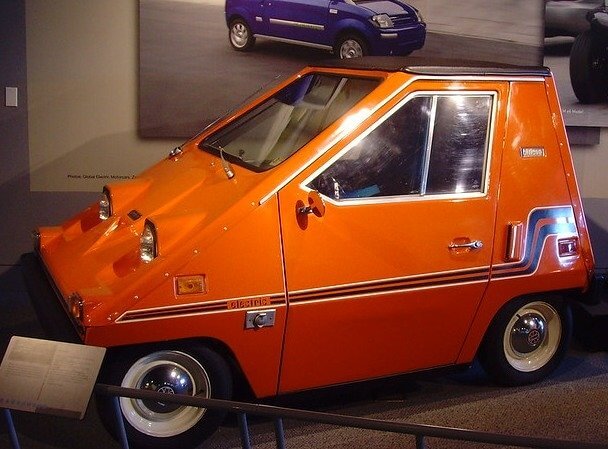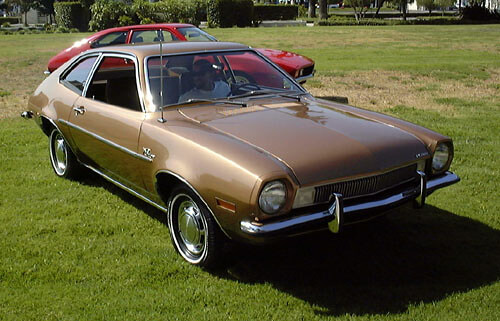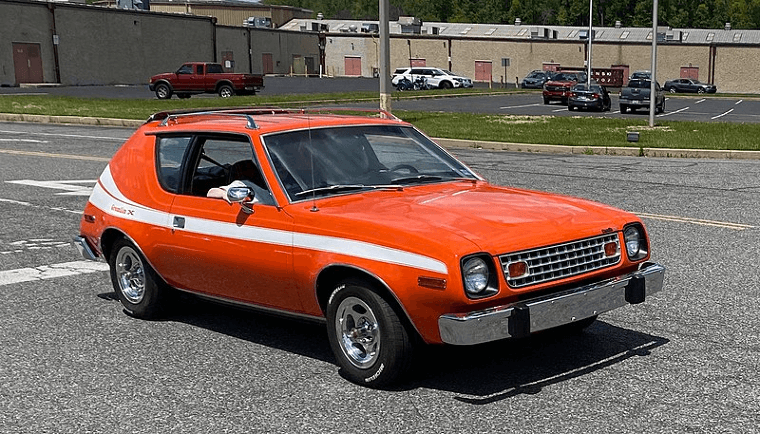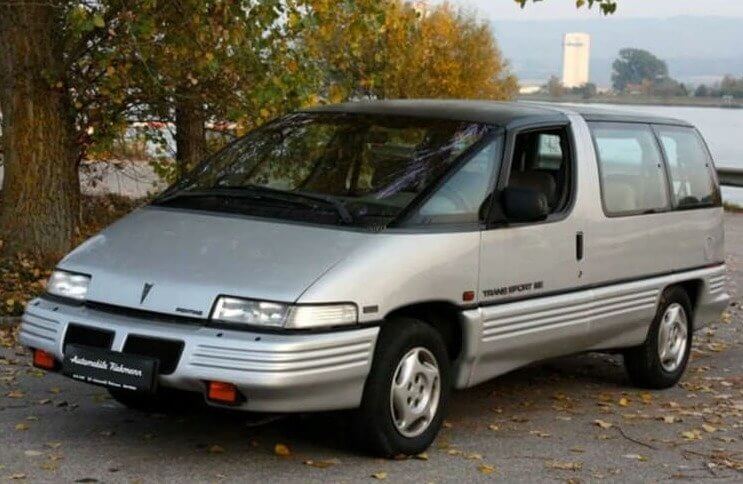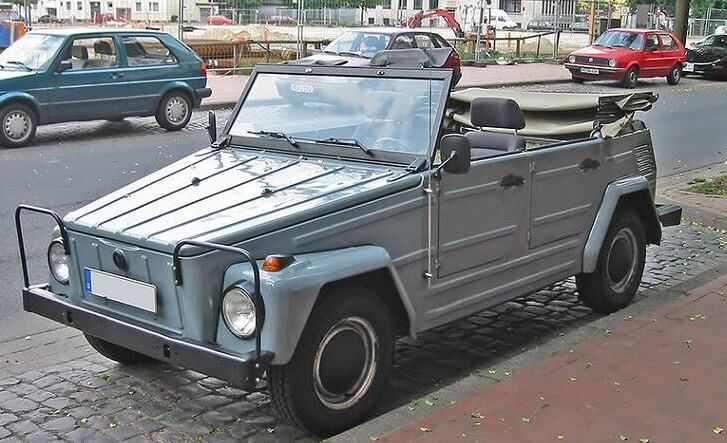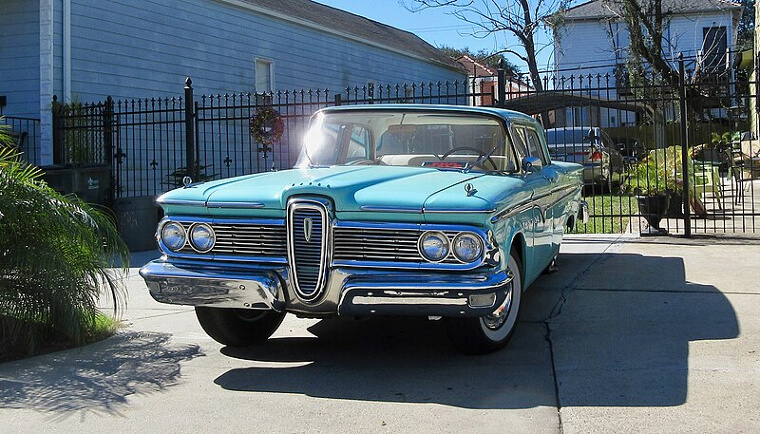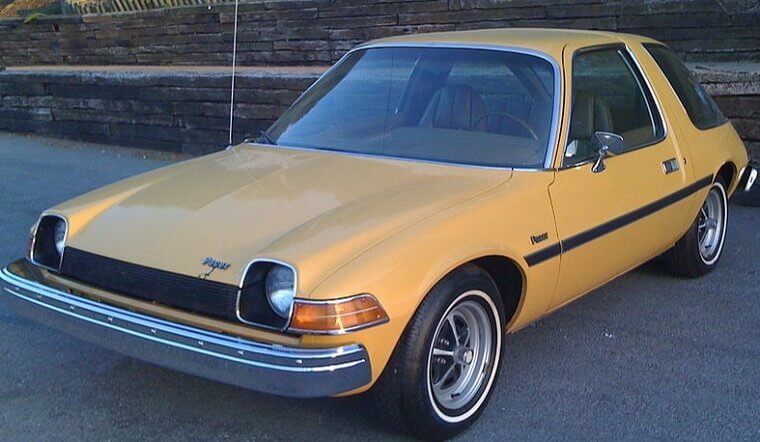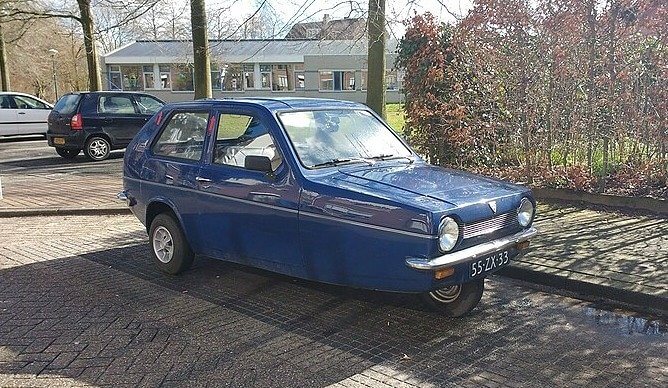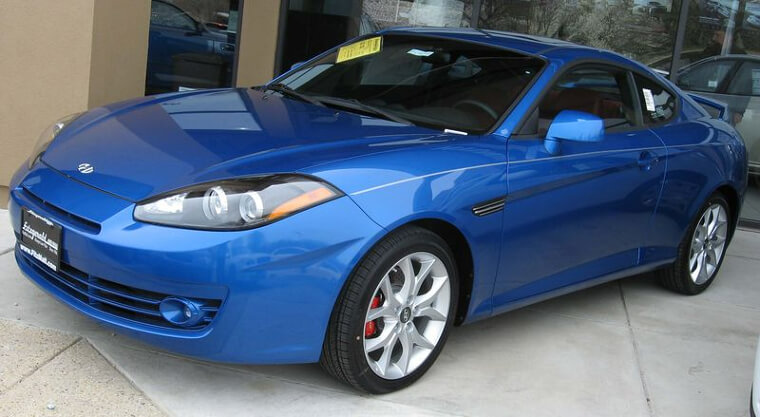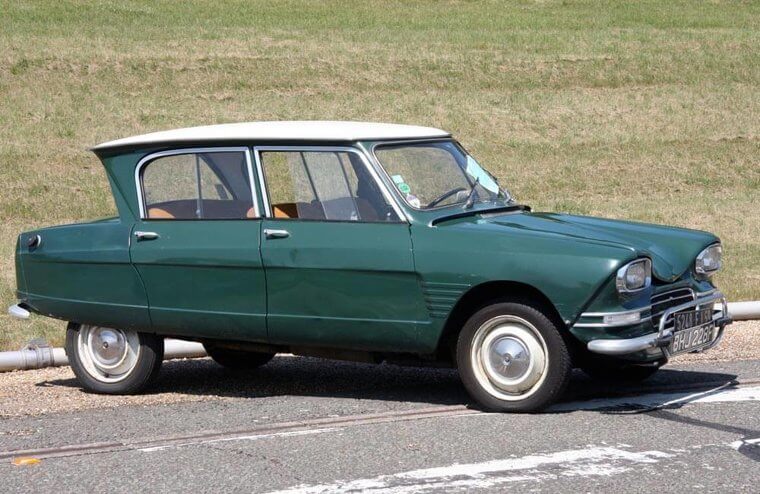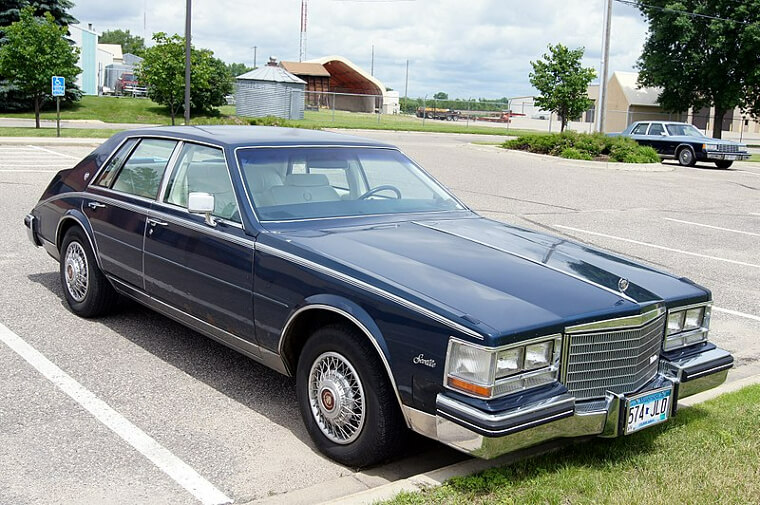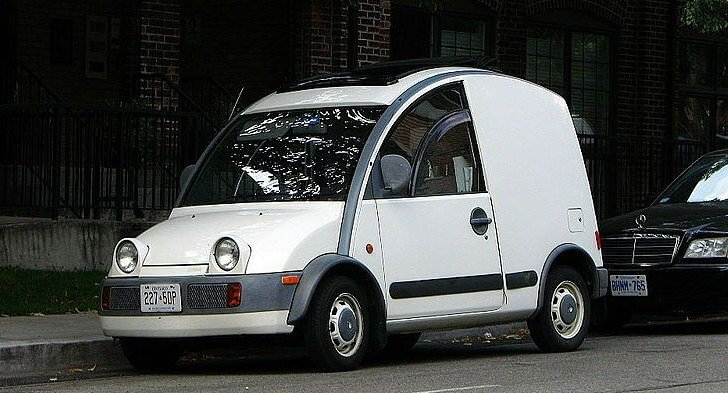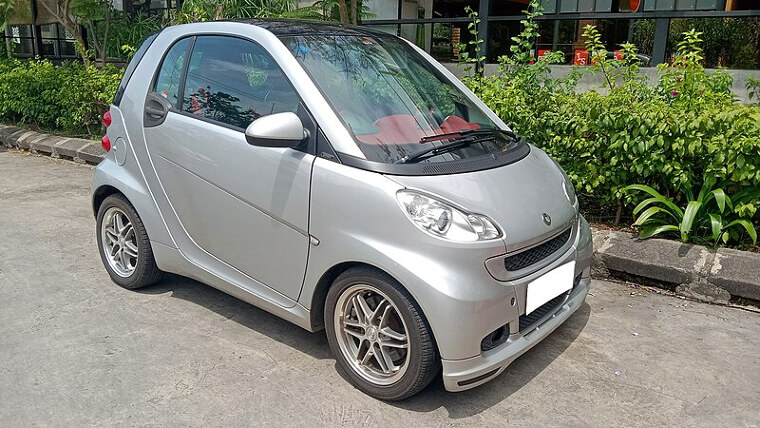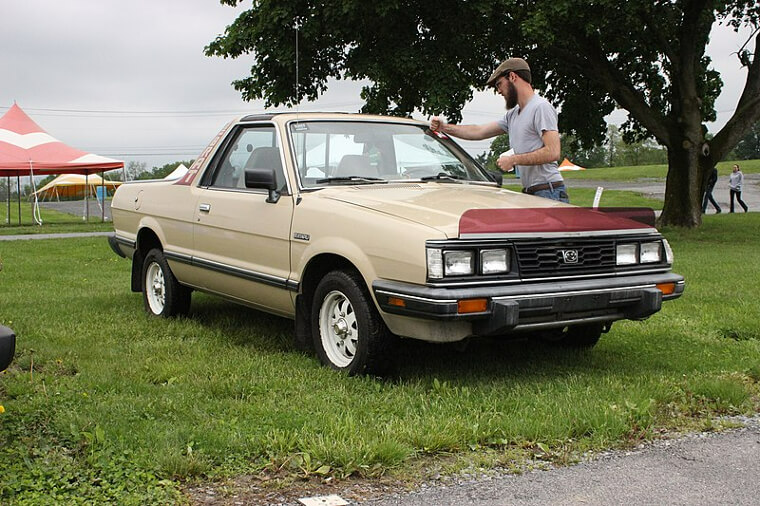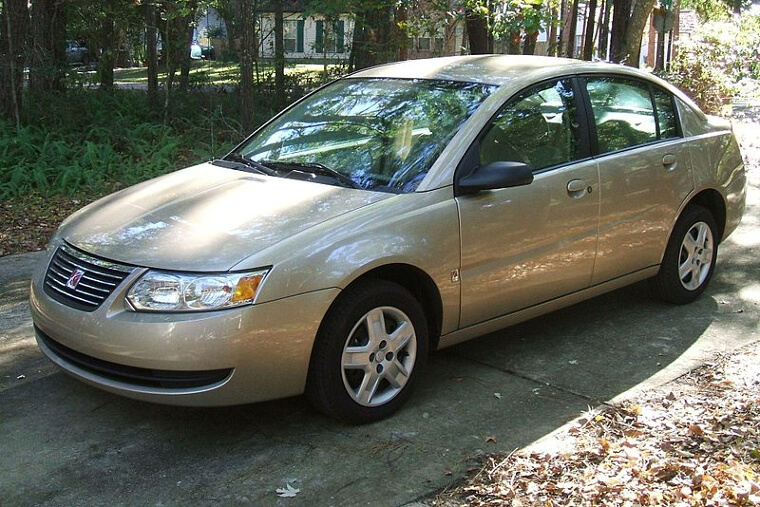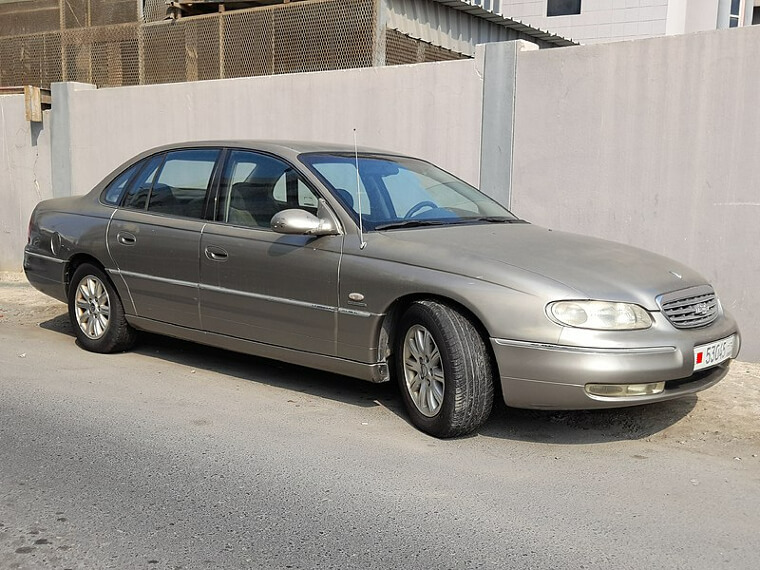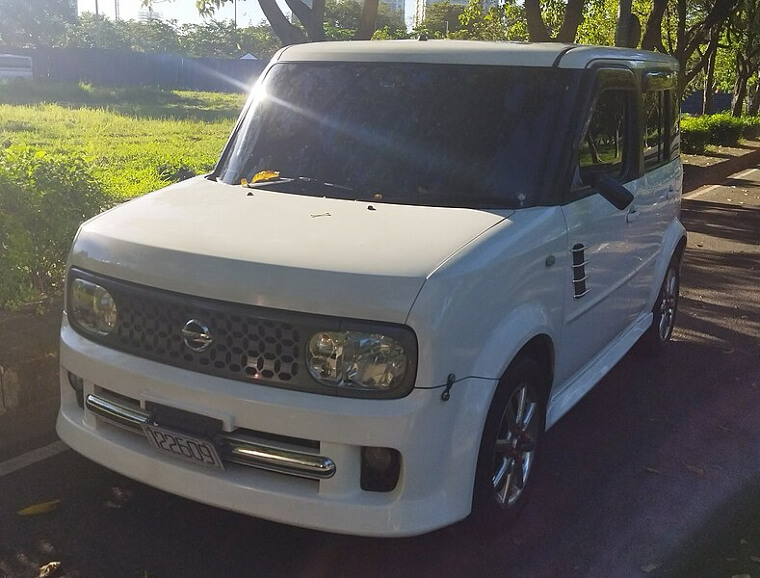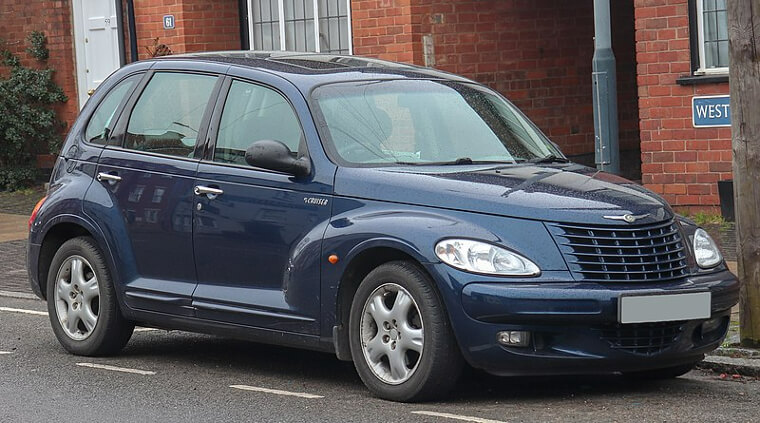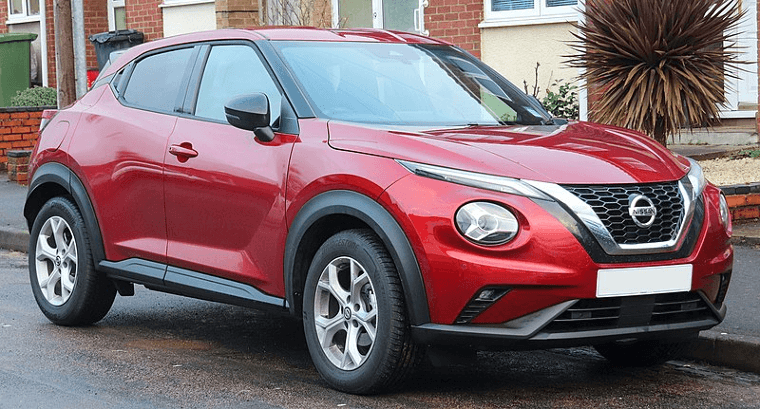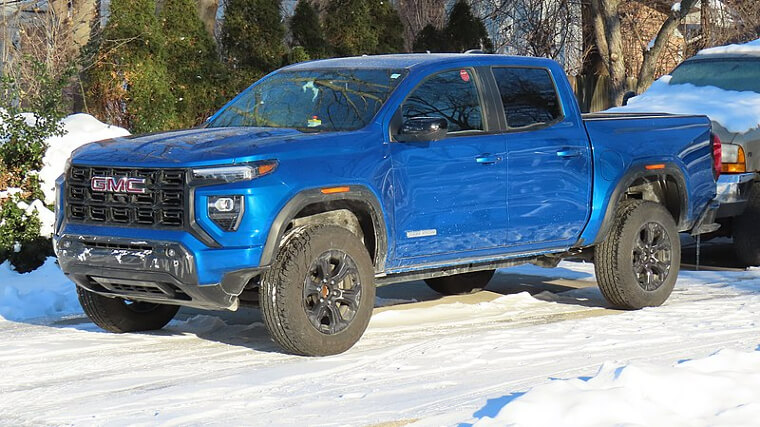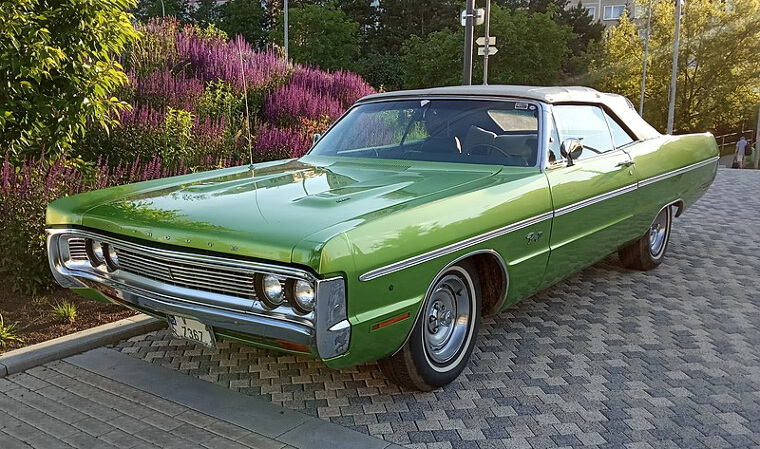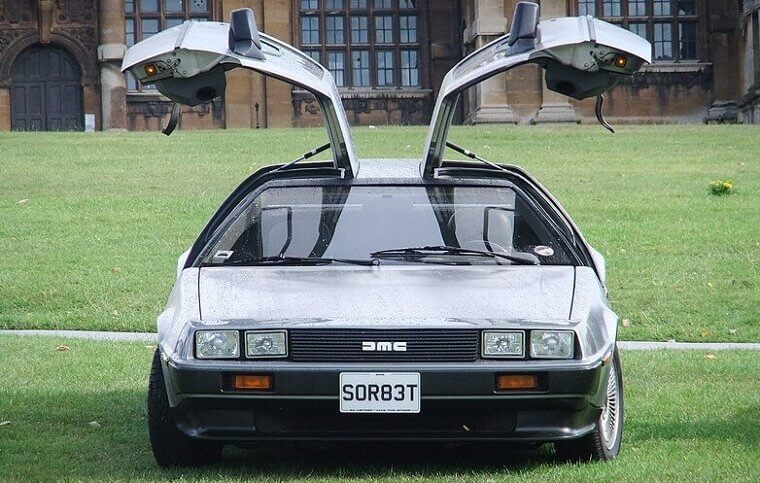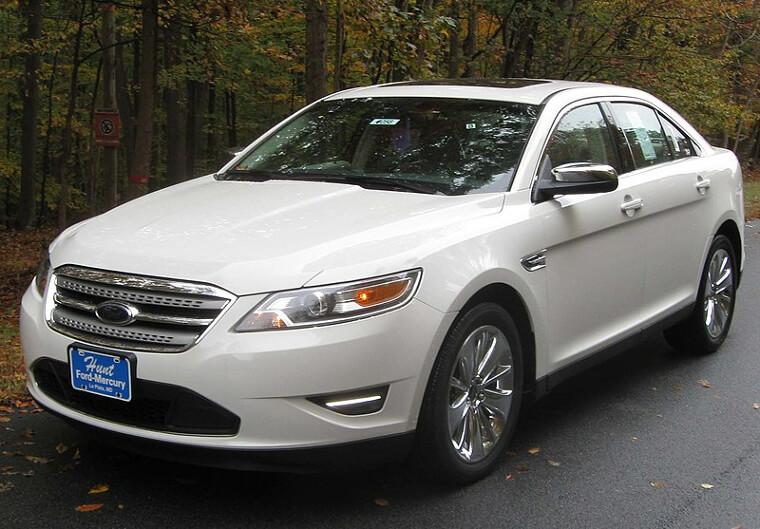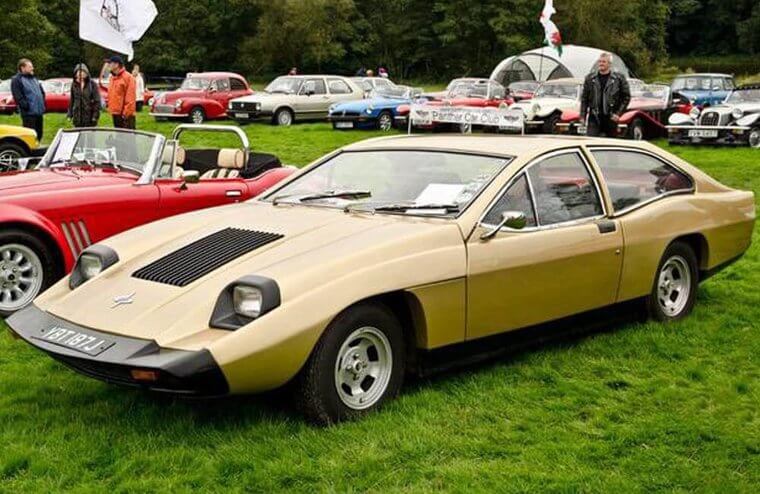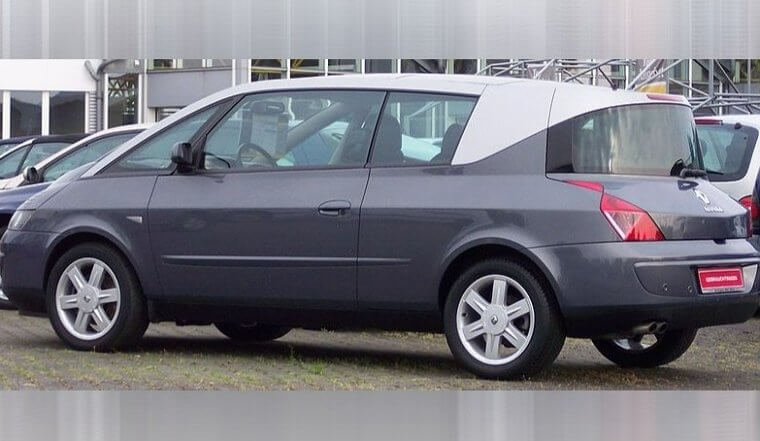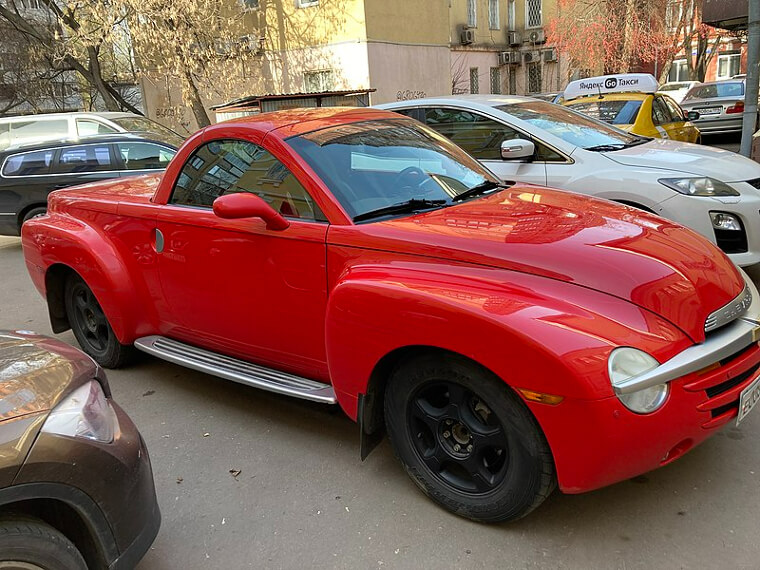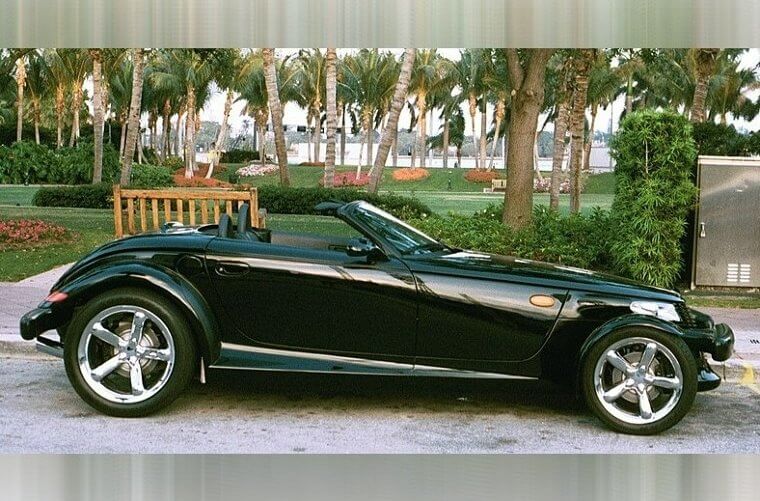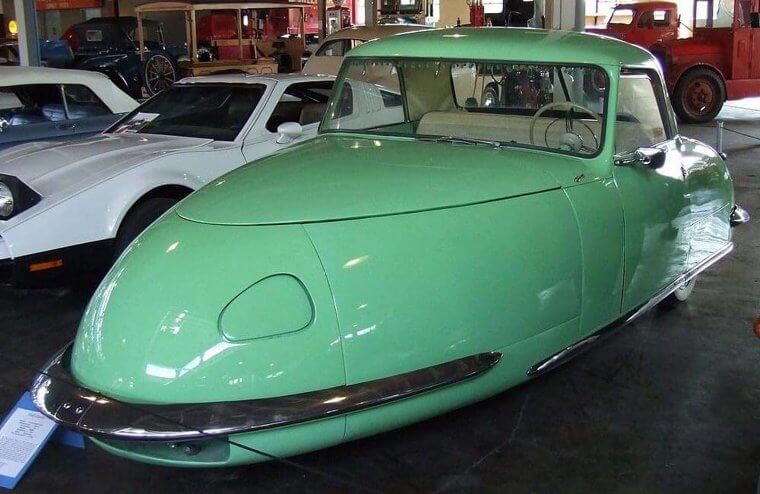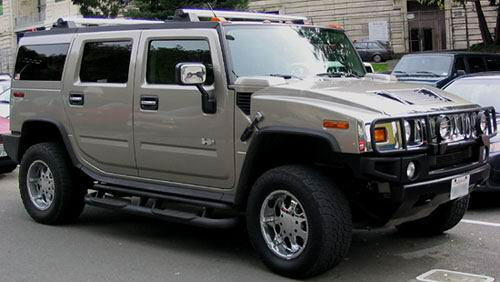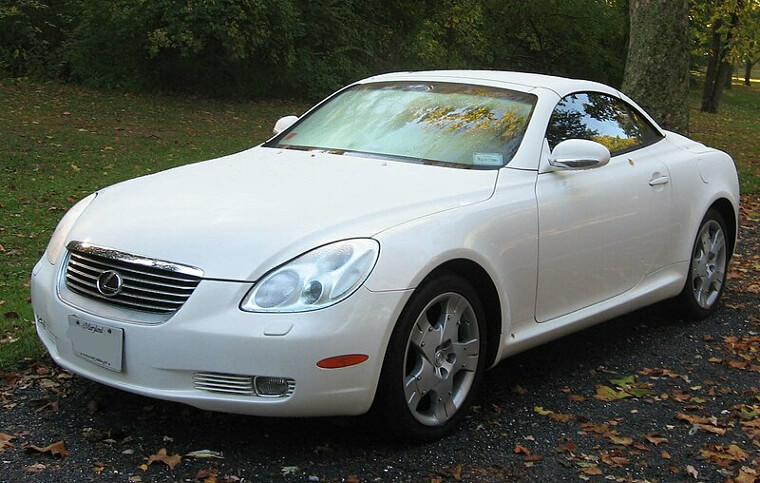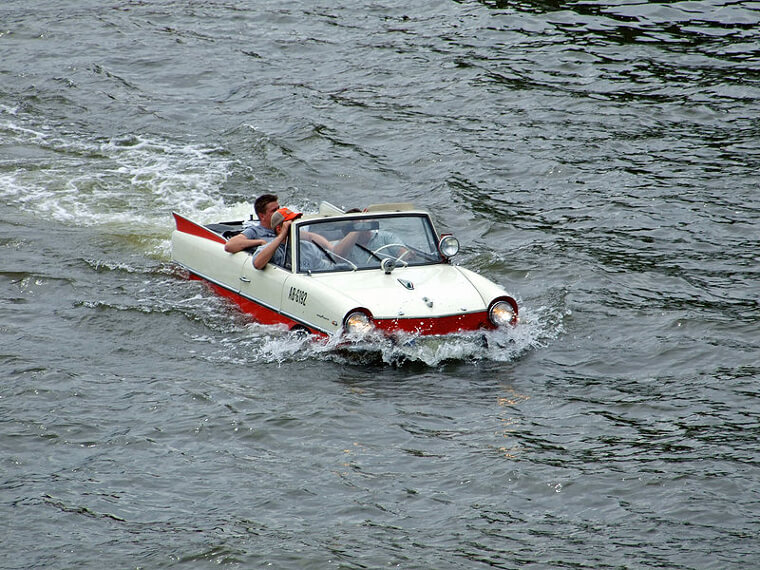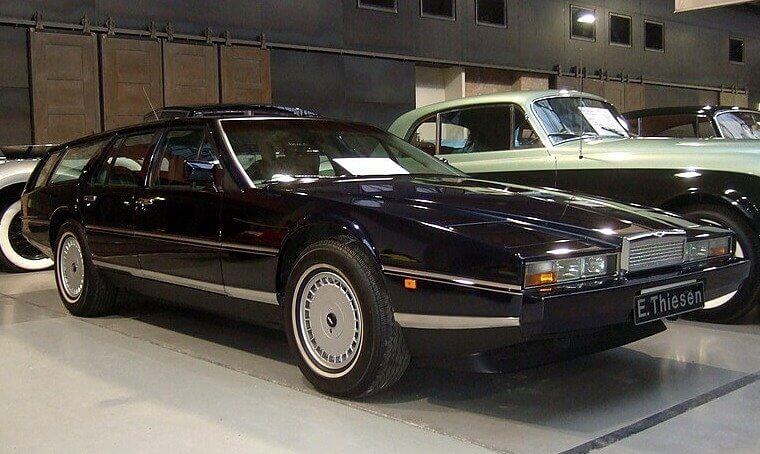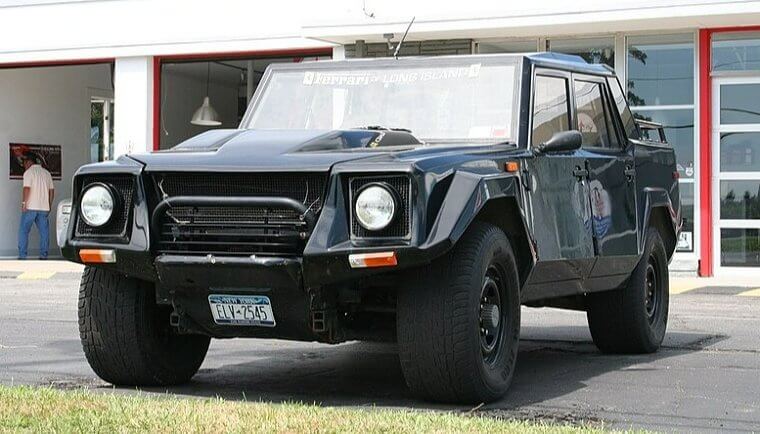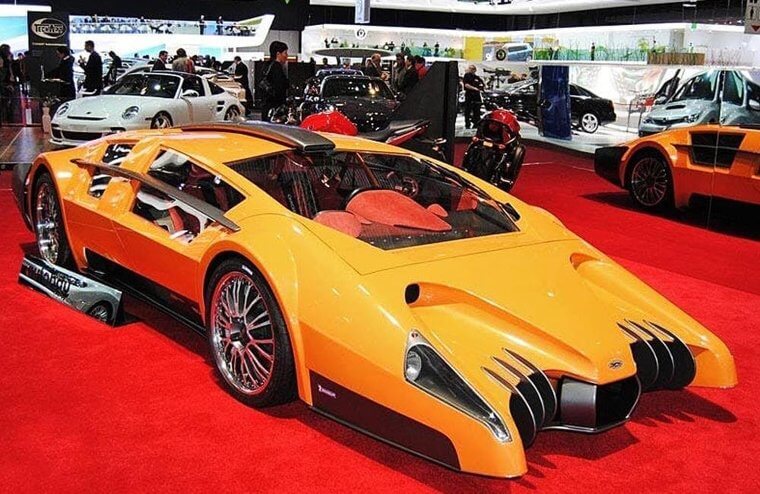40. Vanguard CitiCar - $655
This electric car from Sebring-Vanguard car was one of the last things the company put out before going under. The company took a significant risk in hoping clients would embrace the small, wedge-shaped electric car in the face of an ongoing oil crisis. This gamble is likely what cost the company in the end. Not only was the car tiny and impractical, it was super-slow, with a top speed of 39mph. The two-door two-seater weighed only 1,303 pounds and stood five feet tall. While the design was weird and unpopular then, it still persists.
The Norwegian Kewet used the Citicar design, acting as a spiritual successor. The Citicar was a design that Vanguard took a gamble on but the world seemingly wasn't ready.
39. Ford Pinto - $1,850
A used cars so bad that it earned its own episode on Worst Car Ever, the Ford Pinto is quite infamous. Mechanics recommend that people stay far away from these cars because they tend to catch alight. The design and production of the Pinto was rushed and incredibly flawed, with a fragile fuel tank that, if bumped, was likely to leak and erupt in flames.
Ford faced over 100 lawsuits thanks to the Pinto. The penchant for making any slight bump or accident worse led to many injuries and even some deaths.
38. AMC Gremlin - $1,959
Automobile Mag said that history had "been unkind" to the AMC Gremlin. These affordable cars sold quite well and was popular, but that doesn't excuse its terrible handling and mechanical errors. A particular example was how the flip-up rear window was fragile enough to be broken off by hand. Not only was this a mechanical error, but a security hazard, too. The Gremlin made its way onto the Globe and Mail's list of "12 Worst Cars Ever Built."
The impossible handling, varying mechanical errors, and security risks somehow didn't stop this car from selling well, and many are still scratching their heads figuring out how it became so popular.
37. Suzuki X-90 - $1,992
The biggest complaint about the X-90 was because of its size. While many prefer smaller cars, the X-90 took it to the next level by creating a tiny, cramped interior that was uncomfortable and difficult to get in and out of. Described in The Truth About Cars as something "surreal" and "bizarre," the X-90 had many strange design choices. For example, the four-wheel-drive mode would damage the transfer case, and the T-Top would often get jammed.
Luckily, the X-90 had a short production run between 1995 and 1997. However, many still remember the awkwardness of the vehicle, and mechanics know of the infamous issues all too well.
36. Pontiac Trans Sport - $2,279
A series of U-body minivans from Pontiac, these cars are remembered for their very strange design. Earning the nickname "Dustbuster," GM's approach was to try to create a competitor to Chevrolet and Chrysler's minivans, focusing on sportiness and style. When it was released, however, it was mocked and almost immediately dismissed. Not only were the looks an issue for many, but the minivans also had trouble with the IIHS, who claimed it was an unreliable vehicle.
While the car might be a fun novelty for those who enjoy strange-looking cars, the Trans Port isn't recommended by mechanics. It handles poorly, and the sloped window has historically made inexperienced drivers uncomfortable.
35. Volkswagen Type 181 “Trekker” - $3,150
The VW Trekker is an interesting option for those car shopping for an off-roader. This boxy two-wheel drive car earned the nickname "Thing" and didn't sell very well despite a long production run. The leading cause of this was the super-stripped-down interior, which wasn't appealing for many, given the discomfort of going off-road. The Trekker was most popular in the early 1970s when young Americans bought them.
During the brief period it was imported into America for those sales, people realized the car would soon become a novelty. It wasn't at all family-friendly and was cumbersome, but still fun.
34. Ford Edsel - $3,310
Described by Ford as the "car of the future," the Edsel was a commercial flop. With the main selling point being the price and expensive production having the connotation of excellent quality, buyers soon discovered its many flaws. The car was expensive and poorly made, and the design was poorly timed and considered ugly. For a "car of the future," it only had a production run of two years.
Because it was so expensive, most people didn't get the car. Those who could afford it chose a better car for the same price. Accounting for inflation, the Edsel cost Ford $250 million in production.
33. Pontiac Aztek - $3,415
Considered by some to be one of the worst cars ever, the Aztek is often called the "biggest failure in automotive history" (Thrillist). There are several reasons why it's earned such infamy, and foremost is its appearance. As a weird minivan crossover, it's considered one of the ugliest cars to ever be on the road. Performance-wise, the car was perfectly average but was a commercial flop.
The overstyled design turned most buyers away for something so average in how it was handled. Essentially, it was just too ugly to sell well before being shelved.
32. AMC Pacer - $3,599
Another car to make the Globe and Mail list of worst cars ever, the Pacer, had a unique design feature that turned into its fatal flaw. The car was purposely designed with asymmetrical doors, a quirk meant to make it strange and eccentric to sell better. It was also supposed to help passengers get into the back easier. When the car design was converted into a station wagon, the unique door design caused major problems.
Asymmetrical doors meant that, as a station wagon, opening the right-hand side door would cause everything back there to fall out. This design flaw killed sales and cost AMC over $300 million, accounting for modern inflation.
31. Reliant Robin - $4,616
One of the more unique models on the list, the Reliant Robin, was a car manufactured by Reliant Motor Co. out of Tamworth, England. These three-wheeled cars saw three different generations, were sold for over thirty years, and are novelty collector pieces nowadays. While in production, it was considered a best-seller and the second-most-popular fiberglass car of the time. But do mechanics recommend staying away from it?
The Reliant Robin had a serious safety flaw. The car itself wasn't incredibly balanced, given the three-wheel design, and all it took was a strong wind to potentially send it rolling. On Top Gear, Jeremy Clarkson perfectly demonstrated this is not on the list of safe cars.
30. Hyundai Tiburon - $5,084
Considered to be one of the worst sports cars ever manufactured, the Tiburon is one of Hyundai's earliest cars. When Hyundai first attempted to break into the market, they were still trying to get their footing, so it's easy to understand that their early models weren't all hits. Compared to competitors, the Tiburon wasn't anywhere close. With a 0 to 60 in over seven seconds and a 2.7-liter V6 engine, it didn't ever spark any excitement.
The handling was also described as "lifeless" by Motor1, as the car lacked any good feel behind the wheel. With only 105HP, the Tiburon lagged behind as a sports car.
29. Citroen Ami - $6,600
While many might recognize this car for its 2020 reboot, the original came out in 1961 and had a production run up until 1978. While the original might be an electric quadricycle for those looking for a nostalgic design, it had its fair share of problems. While it was considered reliable mechanically, the style and design drove people off. Given the cramped interior, it's on the tinier side of car designs and was uncomfortable to sit in and drive.
The car also saw many different iterations over its production run, from four-seaters to two-seaters and saloons to vans. While the various designs might have been more accommodating, they were all considered cramped.
28. Cadillac Seville - $6,988
With one of the longest-running production runs of any Cadillac model, the Seville is considered one of the "most disappointing cars" to have been made. Between 1975 and 2004, the Seville saw little commercial success despite being one of the better budget cars. This was mainly because it was a smaller car with poor quality control. Many also disliked the V-8-6-4 variable displacement engine, as it chewed through driver's wallets to get gas.
Poor quality control led to many models breaking down quickly after leaving the factory, so it's easy to see why it never sold well. The long production run is a mystery, given how fast word spread to avoid this model.
27. Nissan S-Cargo - $8,995
Not everyone loves puns, especially when the car looks like this. The name "S-Cargo" stands for "Small Cargo" given its smaller size, but also sounds like "Escargot." This is a reference to the strange and ugly shape of the car, with it being incredibly short and rounded. Listed as one of the ugliest cars in the world, it was initially only available through reservation after being shown off at the 1989 Tokyo Motor Show.
Mechanically, the car was in decent shape and is said to have driven reasonably well. However, the strange shape caused many to hate it, and it sometimes lent to an unwieldy handling.
26. Smart Fortwo - $9,148 to $18,876
Made by Daimler AG's subsidiary, Smart, the Fortwo is a popular car that's sold millions. As a two-passenger city car, its main issues were safety concerns. The IIHS performed various crash tests and gave the car a "Poor" rating, given the high chance of passengers hitting their heads on the steering wheel in crash scenarios. It's also quite lightweight and prone to flipping and spinning out of control if bumped.
Despite the safety risks, the car remains popular as a small, cute city car. Despite the recommendation of mechanics, drivers still continue to go out and put in extra effort to stay safe instead of getting a safer vehicle.
25. Subaru BRAT - $10,000 to $14,999
The "BRAT" is a fun little acronym for the Subaru "Bi-drive Recreational All-terrain Transporter." A strange car that's an odd combination between a sedan and a pickup truck, it had a surprising production run from 1978 to 1994. Its odd design and appearance weren't the only thing working against it, as it was also considerably weaker than similar models, with only 73HP. It managed to stick around for so long after numerous redesigns to try and entice customers.
However, these redesigns ended in vain, and after imports were discontinued in North America in 1987, the rest of the world would follow suit over the coming years.
24. Saturn Ion - $12,725
With a production run between 2003 and 2007, the Saturn Ion ended up being supposedly decent as far as second-hand cars go. However, early problems in its production cycle left a bad taste in customer's mouths, and even after the bugs and quirks were sorted out, the car remained unpopular. Even after production, these cars saw mass recalls with problems in the exterior lights, steering systems, parking brakes, and transmission. The gas cap also had issues, leading to a continuous "Check Engine" light.
With so many bugs and small problems with the inherent design, it's no wonder this car remained wildly unpopular after the initial fixes in 2003-2005.
23. Chevrolet Caprice - $16,548
At one point, the Caprice was one of the most popular of Chevrolet's preloved car options on the road. General Motors then took it upon themselves to redesign the popular car for modern demands, making it bulkier and heavier. The redesign was unpopular, to say the least, and missed the mark for many. Nowadays, the Caprice is known for its most common problem: the car is prone to idling anytime the driver stops or shifts gears.
With two reasonably long production runs (1966 - 1996 and then 2001 - 2017), the car was never quite the same ever since the redesign in the 90s, which caused it to fall out of mass appeal.
22. Nissan Cube - $17,500
Described as an "underwhelming experience," the Nissan Cube is a subcompact design. The boxy, four-door hatchback wagon isn't the most visually appealing design, and its power isn't very exciting either. A 1.8-liter four-cylinder engine that delivers 122HP misses the mark on what one would expect from a car in this price range. It also has notoriously poor fuel economy, topping out at 30 on a highway. With CVT and SL topping out at only 31, it's only barely better. For those looking at pre-owned cars, perhaps look elsewhere.
Overall, the car is simply too expensive for the quality of the vehicle. It'll chew through wallets, given the terrible fuel economy, and it'll almost certainly draw eyes to the road - and not in the positive sense.
21. Fiat Multipla - $18,000
This Fiat model is infamously ugly and is considered one of the ugliest designs in the world. Readers of car magazines will find all kinds of colorful descriptions of the Multipla's appearance, as well as just as many jokes online. Performance-wise, the car is perfectly average, so there isn't really much saving it in terms of popularity. With a strangely shaped windshield and the semi-minivan design, the production run from 1998 to 2010 is surprisingly long.
After the vicious mockery of the design and many attempts to improve it without changing its core identity, Fiat eventually gave up and pulled them from their lots in favor of more popular designs.
20. Chrysler PT Cruiser - $19,000 to $21,000
With production starting in 2000 in anticipation of a 2001 big release, the PT Cruiser had an immediately rough existence. Its unique design was actually quite popular among many, but the engine was riddled with many design flaws and manufacturing errors. The car felt terrible while idling and had a "Check Engine" light that was on more often than not despite no apparent issue. It commonly stalled, and it was difficult to start the engine. Production was eventually canceled in 2007.
The looming financial crisis of the late 2000s meant that the PT Cruiser was one of the slower-selling cars that got the cut. Low sales were starting to hit Chrysler hard, and the car was too much of a hassle.
19. Nissan Juke - $21,200
The Nissan Juke is often touted as the prime example of Nissan's slipping popularity. According to What Car, the company has been on a decline for a while compared to other major automotive companies. The Juke is a small SUV model that saw average sales increase as newer models emerged. More sales meant more people realizing how many problems the engine had.
With engine complaints making up a quarter of all complaints with the vehicle, it would fall out of popularity in North America. It would eventually stop being imported there altogether, but it can still be found in other parts of the world.
18. GMC Canyon - $22,200
The first model came out in 2004, and the Canyon has seen a few iterations and updates. However, many magazines and car news sources warn against the car's design, manufacturing, and mechanical issues. It's long since been plagued with issues that make it unimpressive, unsafe, and unreliable. In particular, the first generations often suffered many electrical faults, brake problems, and steering issues. Later models would retain these but also have leaks and faulty "Check Engine" lights.
With the unpredictability and unreliability of the Canyon, many are highly critical of the car. With it having been in production for decades by this point, it still suffers the same issues that should have been solved.
17. Plymouth Fury - $23,100
The Plymouth Fury was the title subject of the Steven King novel Christine and featured in the John Carpenter movie adaptation. The car's fame was maybe not the most well-earned, as while it was popular from the book and film, mechanics came to hate it. The Curbside Classic described it as one of the "most cartoonish" car designs on the road at the time. Similarly to the Seville of the time, the Fury was plagued with many quality control issues that led to its fall from popularity.
The Fury was perhaps most hurt by these issues, as, despite the fame, the car was rushed through production. It wasn't particularly great to handle, and the engine had many stalling issues.
16. DeLorean DMC-12 - $25,000
The one and same DeLorean of Back to the Future fame, the real car was a massive pain for mechanics of the time. Described as one of the most expensive cars to have ever flopped, it had a short production run from 1981 to 1983. The price was hiked up given the film's fame, as its specifications weren't at all impressive. It wasn't particularly powerful, with only 130HP and 153 pound-feet of torque.
The DMC-12 suffered from the same issues many film-famous cars do: fast production, which led to mechanical flaws and bad-quality builds. The car was fragile, and surprisingly, Delorean managed to manufacture as many as they did.
15. Ford Taurus - $27,800
With a production run from 1986 to 2019, the Taurus ended abruptly when Ford announced they wanted to switch their focus to SUVs and trucks. The Taurus was one of their models that got the cut because of its infamously poor gas mileage and weaker engine. With a mileage of only 18 in the city and 26 on the highway, it suffered far behind its competition.
The further announcement of Ford's switch to only selling the Mustang and Active Focus meant that Taurus had no more place in North American markets.
14. Nissan Cargo - $29,980
The Nissan Cargo has had a few problems since its release. The biggest issues drivers had were the terrible battery life and the rear camera, which caused many issues. It's a car that didn't see mass appeal either, as not many enjoy the smaller, squat, rounded design. Additionally, the rough start caused many to forget the line and ignore later models that came out. The first iteration had a single engine and roof option, which left many disappointed.
When the second iteration rolled out with two engine options - but still only one roof option - the NV 2500 still retained the disliked, short-lived battery.
13. Marcos Mantis M70 - $31,021
AutoTrader described the Marcos Mantis M70 as "the car that makes the Aztek look pretty." Infamous for its design and aesthetic, the M70 is considered to be another one of the world's ugliest cars. Its saving grace is that the car was designed to be a racecar first and foremost, with fewer than 100 being made for outside racing. As race cars, they were obviously built for speed, with a 0 to 60 of 3.7 seconds.
The civilian versions weren't as impressive but were still known to be quite fast. However, the appearance meant the car didn't have great commercial success.
12. Fiat 600 Multipla Marinella - $32,000
The Marinella is a variation on the infamously hideous Multipla. Like its cousins, it didn't fare much better design-wise and was mocked less if only because it was lesser-known. Also known as the 600T, it had a rear-mounted 6.3-liter 4-cylinder engine that was prone to getting damaged from even the slightest of bumps. It was also an open design with a top speed in the fifties, making it quite impractical in many scenarios.
The open design also made it quite lightweight, but it was prone to rolling. The wooden slat bench in the rear was also incredibly uncomfortable for car rides.
11. Renault Avantime - $38,800
The Avantime—French for "ahead of its time"—was designed by the same car designer as the Ford Sierra. While the Sierra went on to become quite popular, the Avantime was dramatically less so. This is primarily owed to its strange visual design, which was long, smooth, and unattractive for many. It was originally designed purely as a concept car, not intended to reach production in the state that it did.
The fact that it made it to production without any significant changes ultimately caused its downfall. With fewer than 9000 units ever sold in its two-year production run from 2001, it was a commercial failure.
10. Chevrolet SSR - $39,240
Initially built in 2003, the Chevy SSR had a very questionable production run. The main gimmick of the vehicle was it was made almost entirely by a computer, with no hands-on work until the very end of its manufacturing. While this certainly raised a few red flags, it still made it to the roads, although it didn't last very long. Getting pulled off the lots in 2006, its cancellation was announced alongside the shutting down of the GM Craft Center.
The car's main issue- besides its strange production - was the engine. There were notorious issues changing from first to second gear, and engine bogging was common.
9. Plymouth Prowler - $39,300
Some might recognize the Prowler from its original debut as the Chrysler Prowler before its rename. With its short sales run from 1997 to 2002, the Prowler has had many issues since it first hit the market. The first critique it received was of its very weak V6 engine and the lack of any manual transmission options available. It also only came in purple, an uncommon and less popular color then.
Having only ever sold a few hundred initially, it was revised in 1999 when it returned with a new engine, but the higher price meant nobody wanted to give it a shot.
8. Tesla Cybertruck - $39,900
The disastrous reveal of the Cybertruck certainly did nothing to help its popularity. With the "bulletproof" windows shattered by Elon Musk and a rock in front of thousands and broadcast to millions, it wasn't a great look. Its odd shape is another point of contention, as many dislike its strange, angular, boxy design. There are also plenty of issues that have made making the Cybertruck road legal difficult in many parts of the world.
With the lack of commonly required elements at launch and a disastrous showcase, the Cybertruck is unlikely to take off really ever. The first impressions have certainly harmed the vehicle for life.
7. Davis Divan - $44,600
Gary Davis, founder of the Davis Company, designed and built his first-ever car, the Davis Divan. Davis, however, had no experience in the field, and the car had a pretty rough start. Davis was originally a used car salesman and thought that, despite the flaws of the car, he could market it so that he could somehow make a profit. This proved to be what killed the Davis Company, as he wasn't even able to deliver.
The company had raised $1.2 million with dealerships, but as David could not deliver the cars or pay the factories for them, the company was sued until it didn't exist anymore.
6. Hummer H2 - $60,000
Sold between 2002 and 2009, the H2 was a behemoth of a machine. It was massive and performed well in many areas. It did well in collisions, handled well off-road, and sported a 32-gallon tank to fuel the giant car. However, the specification that ruined the car and made it unsuccessful was the terrible gas mileage. Managing only 10 miles per gallon in the city and 13 on the highway, it is one of the most inefficient modern vehicles to be manufactured.
While Hummer is a famous brand for their vehicles that are built like tanks, the H2 is laughably bad, especially for its price. At its cost, drivers can easily find something better.
5. Lexus SC 430 - $68,405
A popular model among Lexus car fans, the SC 430 is less popular with people who aren't biased by brand loyalty. The car was originally a two-passenger coupe before a redesign that made it into a convertible with a sportier design. However, the handling of the car was less than sport. Difficult to handle and without the snappy response time one would expect from a sportier make, it notoriously had terrible resale value.
The SC 430 is a classic example of a car whose price tag matches its looks rather than its quality. The Truth About Cars described it as "styled, rather than engineered" and "looked wrong."
4. Amphicar - $123,400
A novelty car marketed as the "Amphibious Car"—hence the name—debuted at the 1961 New York Auto Show. It was manufactured in West Germany and imported for the many excited buyers eager for the novelty. Popular Mechanics described it as a "Good idea" that "never had a chance." With only 4,000 ever being made, it didn't perform well. When used on the water, it never really performed as well as a boat could hope to.
Accomplishing neither as a boat nor as a car, the novelty soon wore off. This is especially true for those who could afford it, as they could likely just get a boat instead.
3. Aston Martin Lagonda Shooting Brake - $150,000 to $200,000
The Lagonda Shooting Brake was a terrible-looking car. A miss on Aston Martin's part, the car is known for its signature wedge design, which is incredibly square and boxy and on the opposite end of the spectrum from the smooth and sleek designs previously put out. The shooting brake style of car originated in the 1890s from horse-drawn carriages, with the term remaining a holdover from the conversions in the early 1900s.
Nowadays, it's widely accepted that the shooting brake style is best left in the past, as the cars just don't have the same appeal as modern or retro aesthetics.
2. Lamborghini LM002 - $300,000
The Lamborghini LM002 was originally worth around $300,000 when it was still being sold. The resale value has dropped to nearly half that value, with later models in the same line costing just as much. Lamborghini's venture into making an off-road truck was not very well-received. The idea was seemingly to sell the truck to the military, but they refused after their assessments. The read-handling, in particular, was unfavorable for any actual off-roading.
While the truck could handle the desert heat, it was eventually sold to American civilians, where it earned the nickname "Rambo-Lambo." We're not too sure about this one!
1. Sbarro Autobau - $1 Million
The Sbarro Autobau is of Swiss design and is notoriously terrible looking for its insane price tag. The Autobau was designed as a tribute in 2010 to the Swiss racing driver Fredy Lienhard. People were immediately torn when it debuted that same year at the General Motors Show. It sported an incredibly high horsepower of 500HP, but the design was bright orange, squarish with three prongs, and incredibly non-aerodynamic.
The showcased car was a once-off concept, a tribute car designed to be shown off and sold to whoever wanted it as a collection piece. However, no one has yet taken the glaring design.

